Designing a home that’s both kid-friendly and stylish can feel like trying to make gulab jamun healthy – a daunting yet sweet task! In Indian households, our homes are more than just places to live; they’re sanctuaries where traditions thrive and family bonds are strengthened. This cultural richness makes it essential to design spaces that are practical for children and aesthetically pleasing for adults.
Indian homes are always buzzing with life, from kids playing and studying to adults working and entertaining guests. This dynamic environment calls for thoughtful interior design where safety, durability, and style blend seamlessly. Often, children in India share their rooms and play areas with siblings, cousins, or even grandparents. This shared living space needs to be versatile and adaptable.
Take the lively home of the Sharma family. Their two children, Aarav and Ananya, share a bedroom that doubles as a play area and study zone. This room needs to be a safe haven for the toddlers to explore, a quiet space for studies, and a cozy corner to unwind. Meanwhile, the Sharmas want the room to reflect their modern taste with chic furniture and stylish decor.
Let’s explore art of balancing style and functionality to create kid-friendly interiors tailored for Indian households. From choosing durable materials and safe furnishings to adding vibrant decor that appeals to both kids and adults, we’ll provide practical tips and insights to help you design a home that’s as beautiful as it is practical.
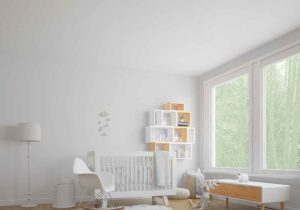
Designing a kid-friendly home in India means embracing principles that cater to the cultural context of Indian families:
Safety First: In bustling Indian homes, ensuring children’s safety is crucial. Use non-toxic paints, rounded furniture edges, and secure fittings to prevent accidents. Childproof electrical outlets and anchor heavy furniture to avoid tipping.
Durability and Easy Maintenance: Indian homes are lively and active. Choose materials that withstand wear and tear. Opt for durable fabrics like microfiber or leather for upholstery, and robust flooring like laminate or tile that’s easy to clean.
Flexibility and Adaptability: Indian homes host frequent gatherings and varied activities. Spaces must be flexible. Modular furniture that reconfigures for different uses is perfect. Think sofas with hidden storage or tables that fold away.
Multifunctional Spaces: With space often at a premium, design multifunctional rooms. A child’s bedroom can include a study nook, play area, and ample storage. Foldable desks, bunk beds with storage, and wall-mounted shelves maximize space efficiency.
By focusing on these principles, you design a home that’s safe, durable, and adaptable to the dynamic needs of an Indian family.
Creating a home that’s both kid-friendly and stylish in India is like making a perfect masala dosa—crisp on the outside but soft and delightful on the inside. It’s all about blending traditional aesthetics with modern design to ensure your home is culturally rich and appealing for young families.
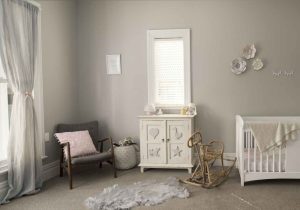
Blend of Tradition and Modernity: Think of a carved wooden bed frame with sleek, minimalist lines—it’s like wearing a kurta with jeans. Combining traditional Indian craftsmanship with modern design elements keeps your home both stylish and rooted in culture.
Durable Materials: Choose materials that can withstand the wear and tear of an active household. Teak and Sheesham wood are like the Rajinikanth of furniture—strong and timeless. Upholstery should be easy to clean, such as leather or stain-resistant fabrics.
Safety: Ensure furniture is kid-friendly with rounded edges and non-toxic finishes. After all, we don’t want little Aarav or Ananya bumping into sharp corners during a game of hide-and-seek!
Vibrant Textiles: Use colorful, patterned textiles like cushions, rugs, and curtains to add a touch of traditional Indian vibrancy to modern spaces. Kantha quilts and block-printed fabrics can serve as beautiful decor elements, bringing a slice of tradition into contemporary settings.
Handcrafted Furniture: Invest in handcrafted pieces showcasing Indian artistry, like intricately carved wooden chests or hand-painted cabinets. These items add character and uniqueness to your home, much like a well-told Bollywood story.
Sustainable Materials: Opt for eco-friendly materials such as bamboo, jute, and recycled wood. These materials are not only durable but also support sustainable practices. It’s like adding a bit of green chutney to your decor—refreshing and responsible.
Using locally crafted items supports local artisans and keeps traditional skills alive. Madhubani paintings, Rajasthani pottery, or handwoven baskets can serve as stunning decor pieces. These elements enhance your home’s aesthetic appeal and instill a sense of cultural pride and heritage.
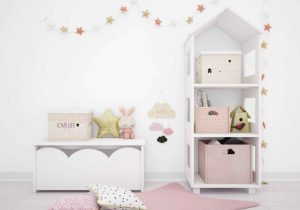
Designing spaces that are both functional and inclusive for children is essential in Indian households, where kids engage in a variety of activities, from play to study.
Visibility: Create play areas in spaces that are easily monitored by parents, like a corner of the living room or a section of the family room. This way, you can keep an eye on the kids while enjoying your chai.
Safety and Organization: Use soft flooring like foam mats to prevent injuries and ensure the area is free of sharp objects. Incorporate storage solutions like bins and shelves to keep toys organized, so the room doesn’t look like a toy tornado hit it.
Ergonomic Furniture: Invest in adjustable desks and chairs to accommodate growing children and ensure proper posture. It’s like finding the perfect spot to read a book—comfort is key.
Adequate Lighting: Ensure the study area is well-lit with both natural light and task lighting to reduce eye strain. After all, no one likes to study in the dark!
Organization: Use wall-mounted shelves, pegboards, and drawers to keep study materials organized and within reach. An organized study space means fewer excuses to not do homework.
Storage Solutions: Utilize under-bed storage, wall-mounted shelves, and multifunctional furniture like storage benches to keep rooms tidy—everything has its place.
Encouraging Independence: Design spaces that children can easily manage, with low shelves and accessible storage bins to encourage them to clean up after themselves. Teach them early that even a little effort goes a long way.
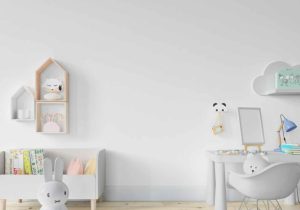
Flexibility: Design rooms that can adapt to the changing needs of children as they grow. A playroom can easily transform into a study area as children age, much like how we adapt our tastes from cartoons to cricket.
Accessibility: Ensure that spaces are accessible to children of all ages and abilities, with considerations for those who might have mobility issues or other special needs. Inclusivity is key to a happy home.
Diverse Activities: Create zones for different activities, such as reading corners, art stations, and quiet areas, to cater to varied interests and promote well-rounded development.
Personalizing kid-friendly rooms while maintaining a culturally sensitive and stylish look involves incorporating elements that reflect Indian traditions and values.
Cultural Colors and Patterns: Use colors and patterns that are significant in Indian culture. Saffron, emerald, and deep blues, along with paisley or floral patterns, can be used in bedding, curtains, and wall decor. It’s like dressing up the room in festive attire.
Themes: Choose themes that resonate with Indian culture and heritage, such as folklore, mythology, or nature. Murals or wall decals depicting stories from the Ramayana or Mahabharata can be both educational and decorative.
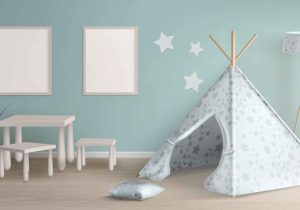
Ownership and Pride: Allow children to participate in the design process by letting them choose colors, themes, and decor items. This involvement fosters a sense of ownership and pride in their space.
Personal Touches: Incorporate items that reflect their personalities and interests, such as custom name plaques, favorite toys, or hobby-related decor.
Festive Decor: Use decorations that celebrate Indian festivals like Diwali, Holi, and Raksha Bandhan. A dedicated shelf for diyas and rangoli designs during Diwali or colorful powders and water guns for Holi makes the room feel special.
Cultural Artifacts: Display traditional artifacts like brass lamps, handcrafted dolls, or miniature models of historical monuments to educate children about their heritage.
Milestone Celebrations: Decorate the room with items that celebrate significant milestones such as birthdays, religious ceremonies, or academic achievements. Photo walls, certificates, and trophies can make a child feel proud of their accomplishments.
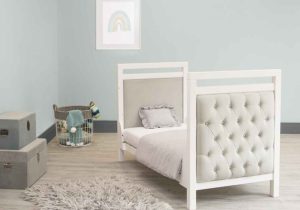
Designing a home that is both kid-friendly and stylish is an achievable goal, especially with the right approach and expertise. Balancing tradition and modernity, creating functional corners for children, and personalising rooms with cultural sensitivity are all key elements in making your home both beautiful and practical for your family. By considering these design tips, you can create a harmonious environment that caters to the needs of both children and adults, ensuring that your home is a sanctuary for everyone.
At Bonito Designs, we understand the unique challenges and joys of creating a kid-friendly yet stylish home. As a full-home interior design brand, we offer end-to-end solutions that cater to every aspect of your design needs. Our commitment to quality and attention to detail set us apart, ensuring that every project we undertake is executed to perfection.
When you choose Bonito Designs, you are choosing a brand that prioritizes quality. Each project undergoes seven quality checks and over 400 tests, ensuring that every element of your home meets the highest standards. Our in-house manufacturing process means that everything is built from scratch, allowing for customization and precision that mass-produced items cannot match. This meticulous approach ensures that your home is not only beautiful but also durable and safe for your children.
We also understand the importance of timely delivery. Our efficient workforce, consisting of over 300 talented designers and technicians, is dedicated to completing your project within 90 days.
This means you can enjoy your newly designed home without unnecessary delays. Moreover, we offer easy EMI options to make our high-quality services accessible to a wide range of budgets. We believe that everyone deserves a beautifully designed home, and our flexible payment plans make it possible.
Bonito Designs is proud to be the first-ever ISO certified brand in interior design. This certification is a testament to our commitment to maintaining the highest standards in quality and service. Our reputation for excellence is built on years of delivering outstanding results and ensuring customer satisfaction.
From concept to completion, we provide comprehensive design solutions that take the stress out of home renovation and make the process enjoyable and rewarding.
With Bonito Designs, you are not just getting a service; you are investing in a partnership dedicated to creating your dream home.
Trust Bonito Designs to bring your vision to life with unparalleled quality, efficiency, and care.